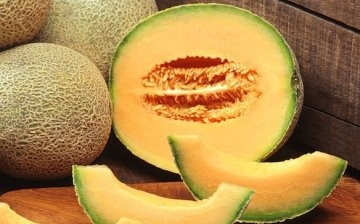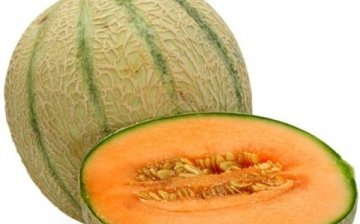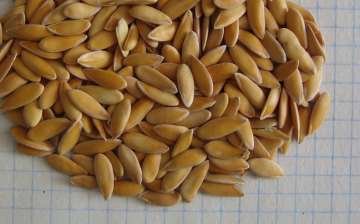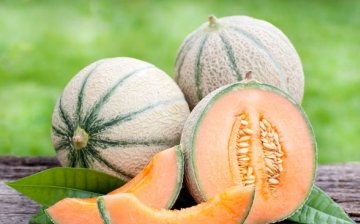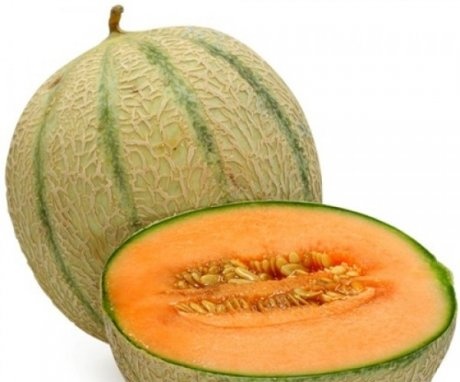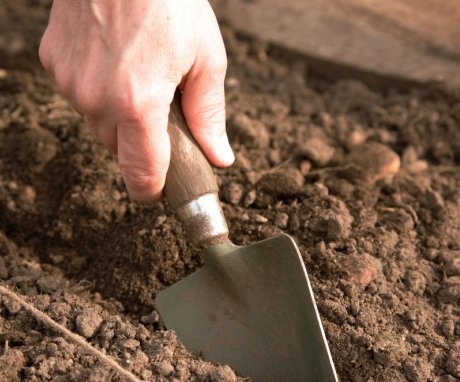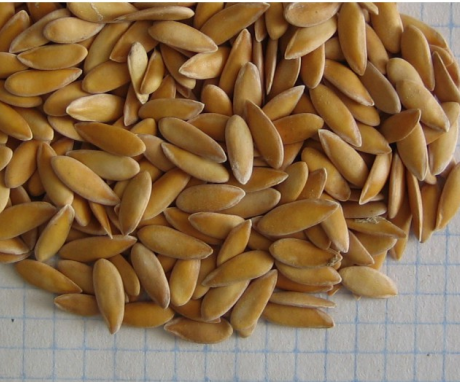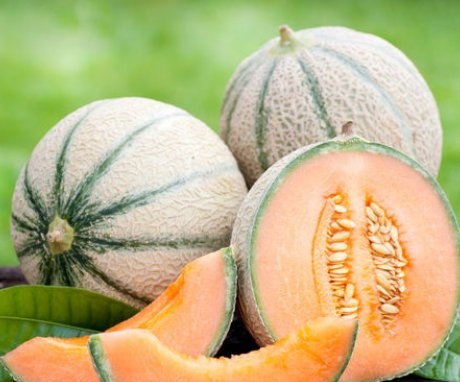Growing cantaloupe melon: soil preparation, planting and care
Cantaloupe melon is one of the varieties of melons that can be grown not only by an experienced gardener, but also by an amateur gardener. The inhabitants of the temperate zone of our country can also grow this wonderful plant. This Central Asian melon looks like a rather large fruit with pleasant aroma and taste. Inside the fruit there is a rather light pulp filled with juice. The cantaloupe melon is somewhat different in color from its compatriots; its flesh, bright orange in color, is unusual and surprising for many.
Content:
- Description of cantaloupe melon
- Properties of cantaloupe melon
- Preparing the soil
- Melon planting
- Plant care
Description of cantaloupe melon
Human cultivation of cantaloupe melon has a long and fascinating history. This plant was mentioned by the inhabitants of America and Western Europe several centuries ago. The Hermitage even contains one of the most curious documents, which indicates the cultivation of this plant in the first century AD by the inhabitants of Ancient Rome. In addition, stunning still lifes made by Dutch artists in the seventeenth century, which depict the bright fruits of this amazing plant, have survived to this day.
The cantaloupe melon is native to Western Europe.
Several varieties of these melons grew in its warm and mild climate. According to ancient legends, it is believed that this type of melon was brought to the territory of Western Europe from Asia, when the crusades were carried out by Catholic monks. It was the monks who captured the melon seed material from the territory of Armenia and brought it to Europe. There was nothing about the melon at all. For a long time, the fruits of cantaloupe melon were considered an exquisite dessert, which was served even to the Pope. The head of the Catholic Church was so interested in the new dish that he sent the seeds received from her for cultivation in one of his estates located in the territory of Cantaluppia. From this amazing place, the melon acquired the name - cantaloupe. Later, from the territory of Italy, this melon began to be planted in Western Europe, and from there it came to our country.
Today, a huge number of varieties of this wonderful culture have been created, which differ from each other in appearance and taste. The largest number of new varieties have been bred in Western Europe, hence many of their names - Western European descendants.
Properties of cantaloupe melon
Today, cantaloupe melon is an object of cultivation not only by professional breeders and gardeners, but also by ordinary amateur gardeners. The advantage in growing cantaloupe melon is due to the simplicity of the crop in cultivation, as well as its excellent taste and aroma.
Melon characteristics:
- Only cantaloupe melon has fruits that contain the maximum amount of carotene necessary for the human body.
- Cantaloupe melons are widely used in the preparation of various jams and candied fruits of the highest quality.
- The fruits of this plant are mid-ripening. They cannot be stored for a long time, but they can withstand long-term transportation over long distances.The reason for this is the rather strong skin that covers the melon fruit.
- The cantaloupe melon plant itself is quite powerful, has large leaves, a dark green color.
- The fruits have a very different shape: from flattened to oval. The surface layer of the fruit can also have a different coating: from smooth to mesh.
- The inner flesh is quite thick and orange in color. The peel of the fruit is usually yellow or orange.
Preparing the soil
Having decided on a variety for cultivation, it is necessary to prepare the land for planting melons. It should be borne in mind that this variety of melons grows preferably in hot climates. Cantaloupe melon grows best in sandy or loamy soil. Good drainage is important to her. For cantaloupe melon, it is best to use soils with an acidity level close to six, that is, a slightly acidic environment.
The selected area for planting should be in a well-lit area and have additional space to accommodate its creeping stems.
Before planting melons in the soil, it is advisable to apply a certain amount of nutritious fertilizers. As a fertilizer, compost or rotted manure is perfect.
First you need to dig up the selected area, thirty centimeters deep. It is necessary to clear the soil from stones and other debris present in it. Introducing small amount of manure, and on top of it compost, make holes for planting.
Melon planting
Melons should be planted only when the ground warms up well. The cantaloupe melon is usually planted with seeds a few days before the last frost.
Melon Planting Secrets:
- In order not to miscalculate about the onset of frost, it is best to plant cantaloupe in open ground in the form of ready-made seedlings.
- Seeds prepared for seedlings are usually planted at home a month before planting seedlings in the ground.
- For planting seeds it is best to prepare a fertile soil.
- As soon as real mature leaves appear on the plant, the melons can be transplanted into open ground.
- Before planting, make small mounds in the soil, thirty centimeters apart.
- The marked beds should be located at a meter distance, insofar as the melons have rather long lashes.
- After waiting for the soil to warm up to eighteen degrees above zero, you can plant seedlings in the prepared soil.
- After planting, young plants must be watered abundantly with warm water.
- When planting a melon with seeds, up to five seeds are placed in the prepared hole.
Plant care
Cantaloupe melons are very demanding for watering. Do not flood the beds with plants until stagnant puddles form in them. On average, one plant should have up to five centimeters of water per week. Watering is especially important for cantaloupe during the onset of the dry season. Healthy plants are characterized by dark green leaves. Healthy leaves are usually quite tough. If there are yellow spots on the surface of the plants, it is safe to say that the plant is sick.
In hot weather, the cantaloupe melon leaves look slightly withered. Don't worry too much about this. This sign only indicates the need for abundant watering for plants. You can use drip tape for watering. Ideal for watering and a regular watering can, which is used by hand. Watering is best done near the stalks, well-irrigated soil surface.
To protect plants from low temperatures, it is necessary to cover the seedlings with a special film.
This event will help protect plants from insect pests. In hot weather and in the daytime, the covering material must be removed so that burns do not appear on the surface of the leaves of the cantaloupe melon.When plants are blooming, the film can be removed completely, otherwise there will be no access for insects to pollinate the flowers. Care should be taken to keep the cantaloupe beds clean. Excessive weeds can inhibit seedling growth. Pull out weeds thoroughly, especially in the early stages of germination and strengthening of the seedlings.
Many gardeners tie up the stems of the plant so that the fruits do not lie on the soil. For these purposes, a lattice fence is perfect. It is advisable to make small lining under the forming fruits, thus significantly alleviating the weight imposed on the stems. Inverted cans work well as a lining. To protect the cantaloupe fruits from damage by various animals, they are covered with various objects. When melon fruits ripen, try to pick the fruits that are in open areas of the soil first, as they will begin to deteriorate much faster than those on the lining.
Melon feeding:
- If necessary, feed the plants with nitrogen fertilizers.
- Among the folk remedies for feeding, watering with coffee grounds is perfect.
- After flowering, the plants are recommended to be fertilized with potash or phosphorus fertilizers.
- For pest and weed control it is best to use folk remedies.
When the fruit ripens, it is necessary to reduce the amount of moisture for the soil, so that the fruit will taste sweeter.
More information can be found in the video.



